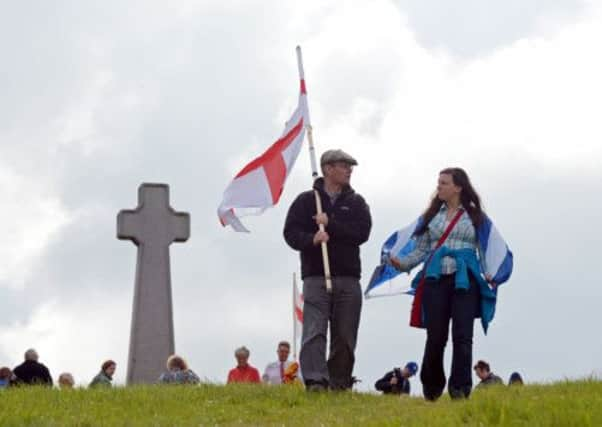Fiona Hyslop: Events remember ‘Renaissance King’


Although the Battle of Flodden took place in Northumberland, it had a significant and lasting impact across Scotland.
Throughout 2013 there has been a number of commemorations for this moment in our history, which resulted in the deaths of James IV, dozens of high ranking nobles and thousands of Scottish soldiers.
Advertisement
Hide AdAdvertisement
Hide AdMemorials to the “Renaissance King” – and the cultural flowering that took place during his reign – can be seen all around us to this day. James IV played a key role in the construction of some of Scotland’s most iconic sites – Edinburgh Castle, Stirling Castle and Linlithgow Palace. The magnificent Great Hall at Stirling Castle, completed around 1503, was the crowning achievement of James IV’s building scheme at Stirling. His story continues to be told through the extensive interpretation that Historic Scotland provides to visitors.
Several Historic Scotland sites with a link to James IV and the story of the battle are taking part in the Flodden 1513 Ecomuseum, a cross-border project funded by the Heritage Lottery Fund, which tells the story of both sides of the battle.
Throughout this summer, Historic Scotland has also arranged a number of living history events at their properties in care, including Linlithgow Palace and Edinburgh Castle.
These will culminate in an event at Stirling Castle on Saturday and Sunday, 21 and 22 September, commemorating the battle, its aftermath, and the coronation of the infant James V. The programme will include a series of interpretative performances by costumed interpreters, bringing to life the events of 1513. Audiences can witness James IV’s wife Margaret Tudor receiving word of her husband’s death, discussing her son, the new king, and reflecting on her ambitious brother Henry VIII.
On 22 September, the Scottish Chamber Choir will perform a unique concert in the Great Hall, with music by the 16th century Scottish composers David Peebles, Andro Kemp and Robert Johnson, alongside the work of James MacMillan.
Stirling Castle will also host an exhibition of artwork inspired by the battle and its aftermath. Catastrophe to Crown, by artist Iona Leishman, will run until 30 September.
Meanwhile, rare historical documents commemorating the Battle of Flodden can now be seen at the National Records of Scotland in Edinburgh. The display includes the testaments of three of the “flowers of the forest” – knights who perished alongside James IV. These personal documents have been brought together with Royal account books that reflect the King’s campaign preparations for invading England in support of the Auld Alliance with France. The exhibition is open until 26 September.
On Thursday, in Hamilton Town House, the Scottish Chamber Orchestra gives the world premiere of Sally Beamish’s new piece commemorating the 500th anniversary of the battle, an elegy partly based on the famous lament The Flowers of the Forest. It will also be performed in Selkirk’s Victoria Hall on Saturday.
Advertisement
Hide AdAdvertisement
Hide AdAlthough a poignantly sad event in Scotland’s history, the anniversary of the Battle of Flodden provides an opportunity for us to reflect on the richness of our diverse heritage, and to share and commemorate our history across a range of cultural activities.
• Fiona Hyslop is Culture and External Affairs Secretary in the Scottish Government.